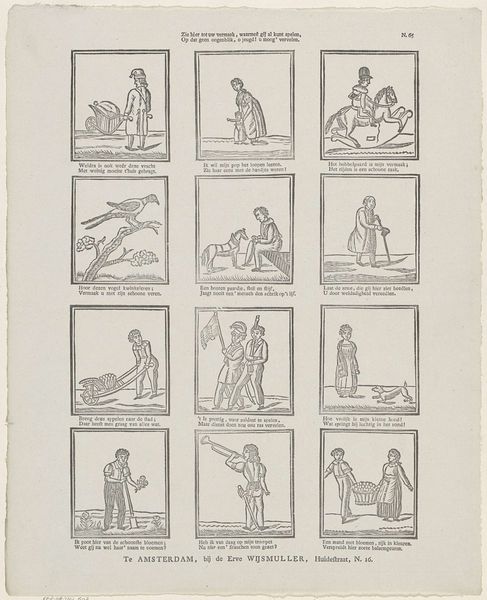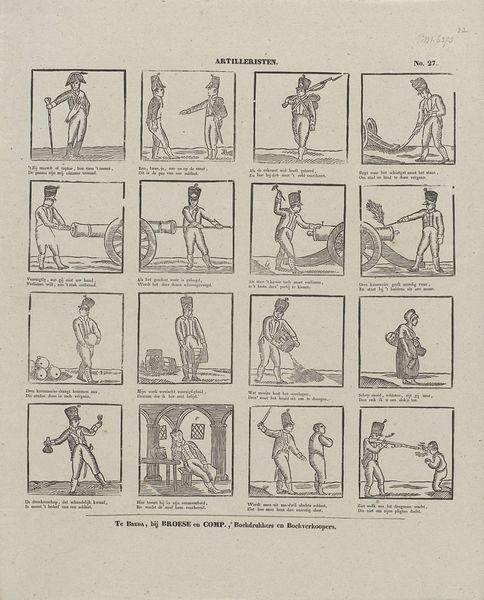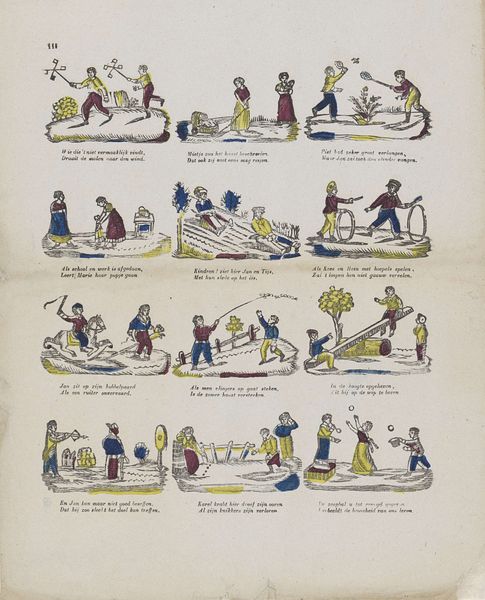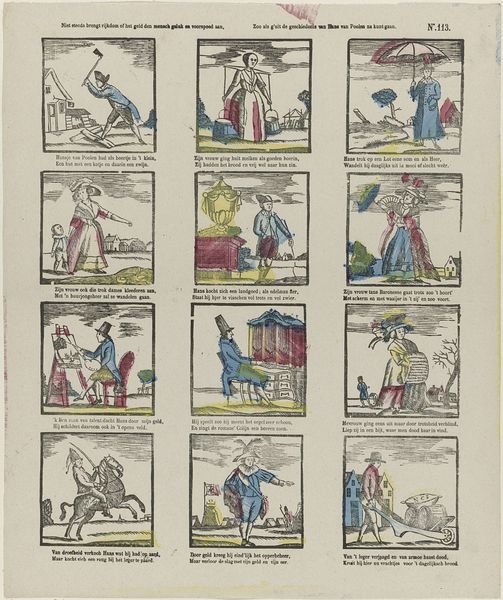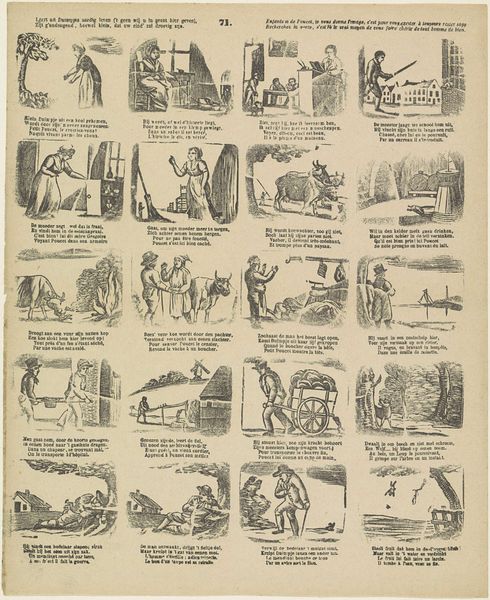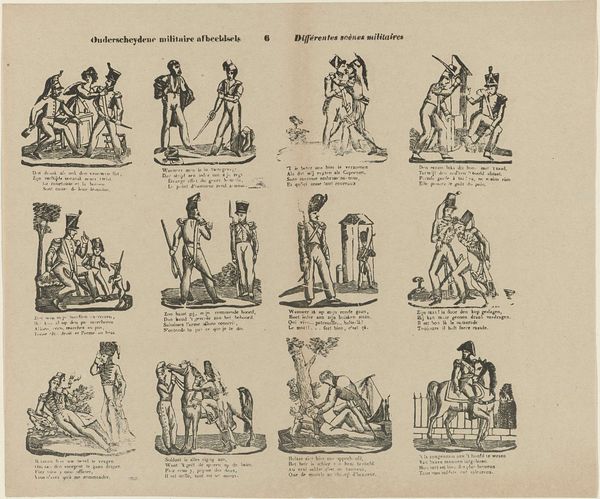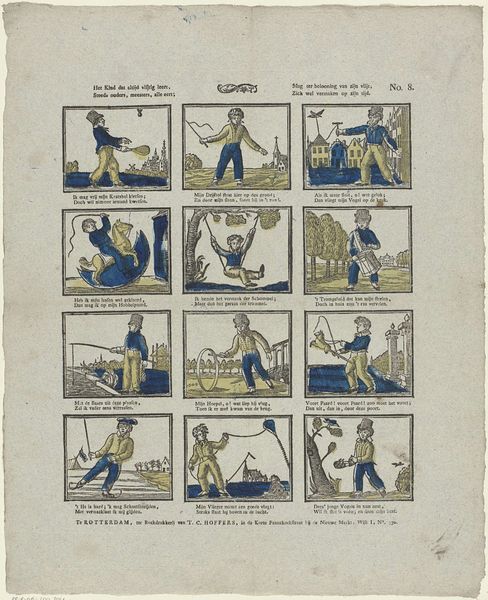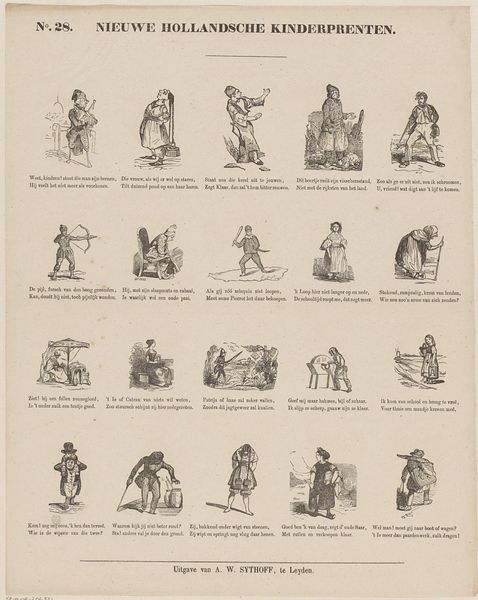
graphic-art, print
#
graphic-art
#
narrative-art
# print
#
figuration
#
line
#
genre-painting
Dimensions: height 379 mm, width 307 mm
Copyright: Rijks Museum: Open Domain
Curator: Welcome to the Rijksmuseum. Here we have "Kinderspelen," a print dating roughly from 1848 to 1881, by Lutkie & Cranenburg. The piece, rendered with delicate lines, captures a series of children's games. Editor: Wow, it feels almost like a storyboard, but each scene is a world unto itself! There's something so nostalgic and innocent about the activities depicted, like kids are perpetually lost in play. I can almost hear their laughter and shouts. Curator: Indeed. These vignettes offer a fascinating glimpse into 19th-century Dutch childhood. Beyond just showcasing their play, this graphic art provides valuable social and cultural insight, reflecting the values and pastimes considered appropriate for children of that era. Think of it as an intersection of innocence and societal expectations. Editor: Societal expectations, hmm. I see children flying kites, riding hobby horses, even having what looks like a tug-of-war. But the drawing style gives it a quaint, dreamlike feeling. There is a sense of naivety with the characters and compositions. Are those verses written above each frame? Curator: Yes, those are captions adding to the piece's narrative. The text is integrated directly into the art, to offer commentary, reflecting the didactic spirit prevalent during this era, as people wanted to teach lessons through visuals. These pairings of image and word really speak to how childhood itself was being shaped by moral instruction. Editor: So, less "letting kids be kids," and more "let's guide their play with purpose." Despite that, or maybe because of it, the simple joy captured in each panel still resonates. Curator: Precisely. Even with that lens of intended moralism, the artwork reminds us of how certain human experiences, like playing and learning, stay constant. Editor: That balance is interesting. It really invites us to examine the universal theme of childhood from a very specific and culturally imprinted moment in time. Curator: And in the end it pushes one to think about the construction of childhood— how we teach kids through visual aids what being a child "is." Editor: I see that, and I guess as a final reflection on this image it reminds us all how constructed nostalgia for childhood really is.
Comments
No comments
Be the first to comment and join the conversation on the ultimate creative platform.
